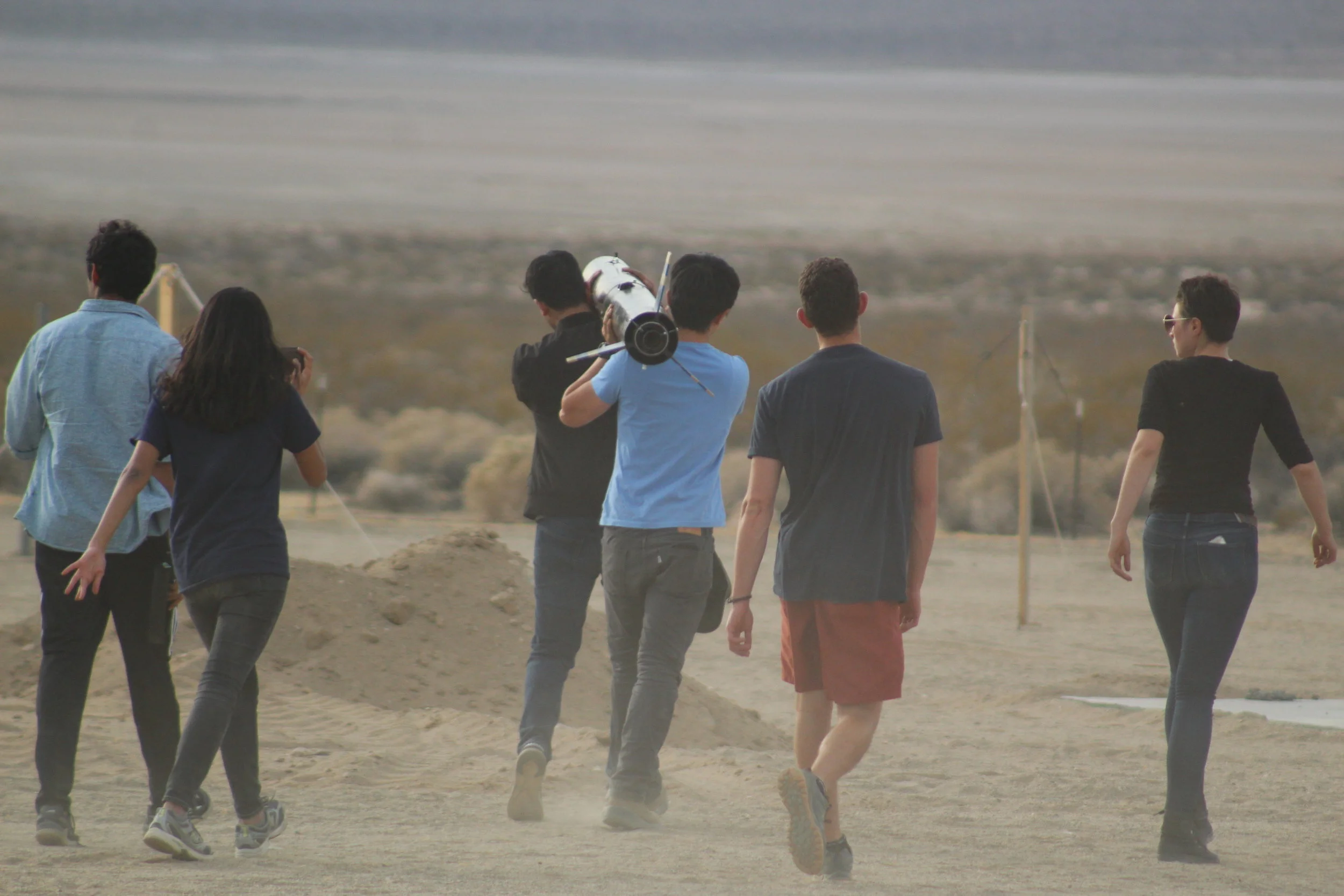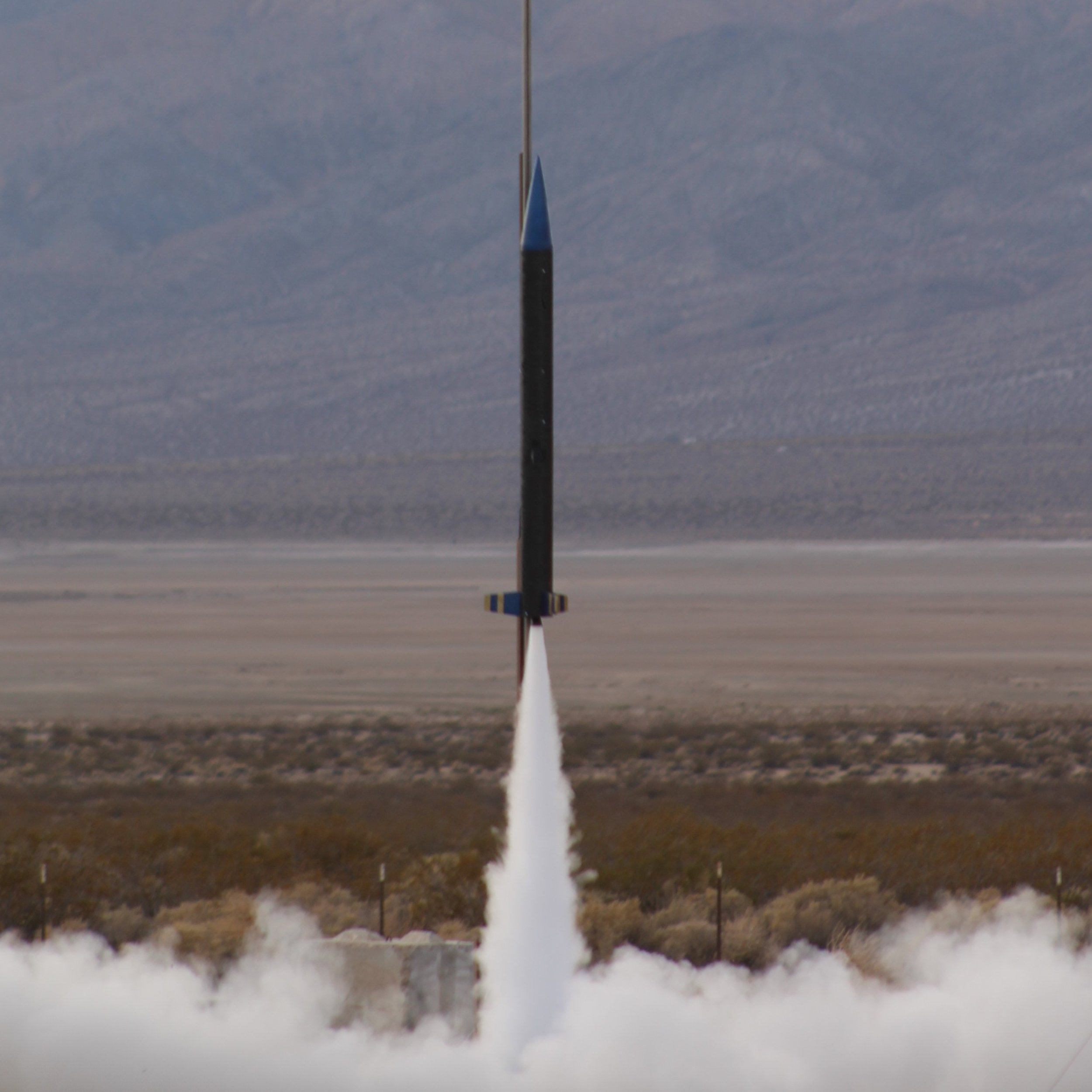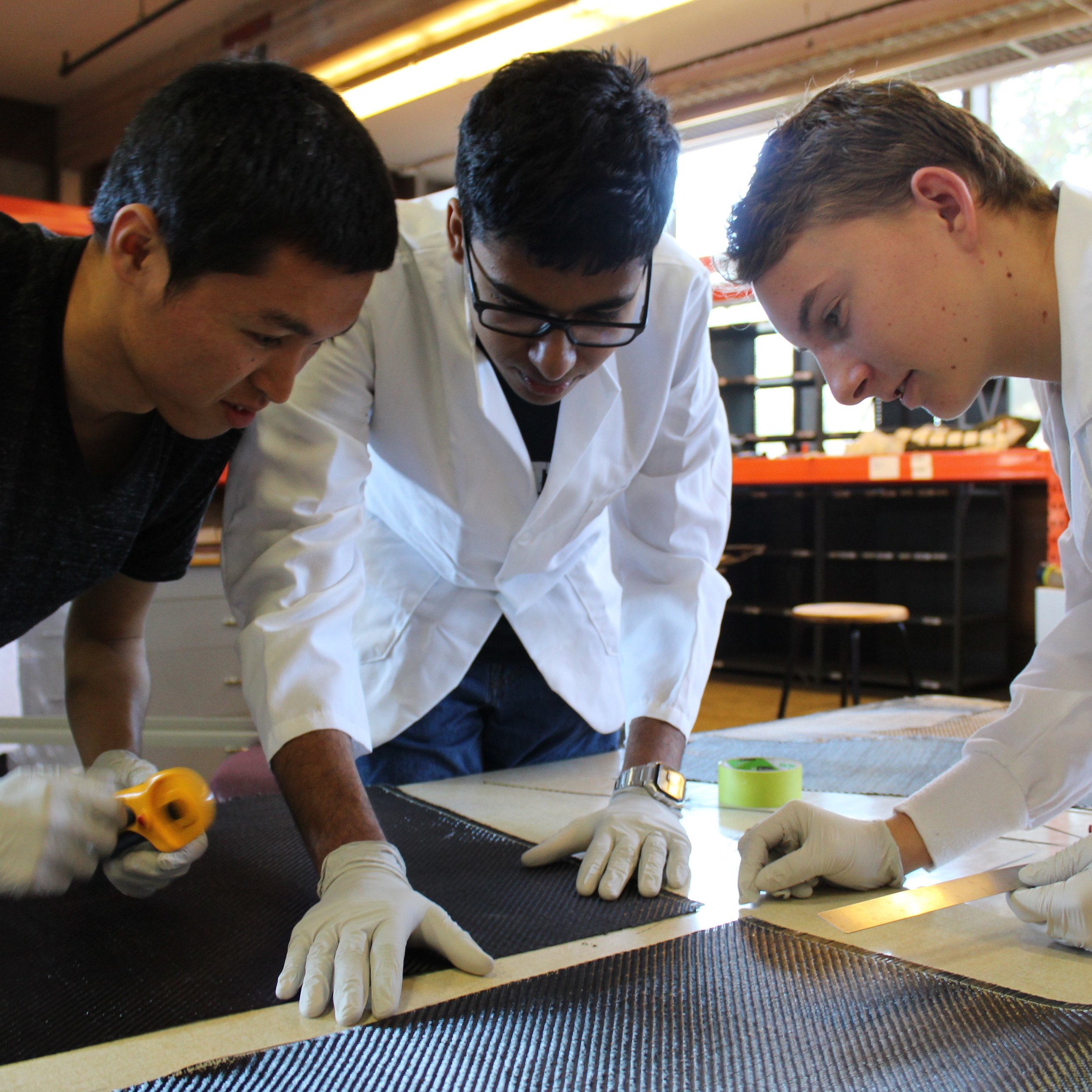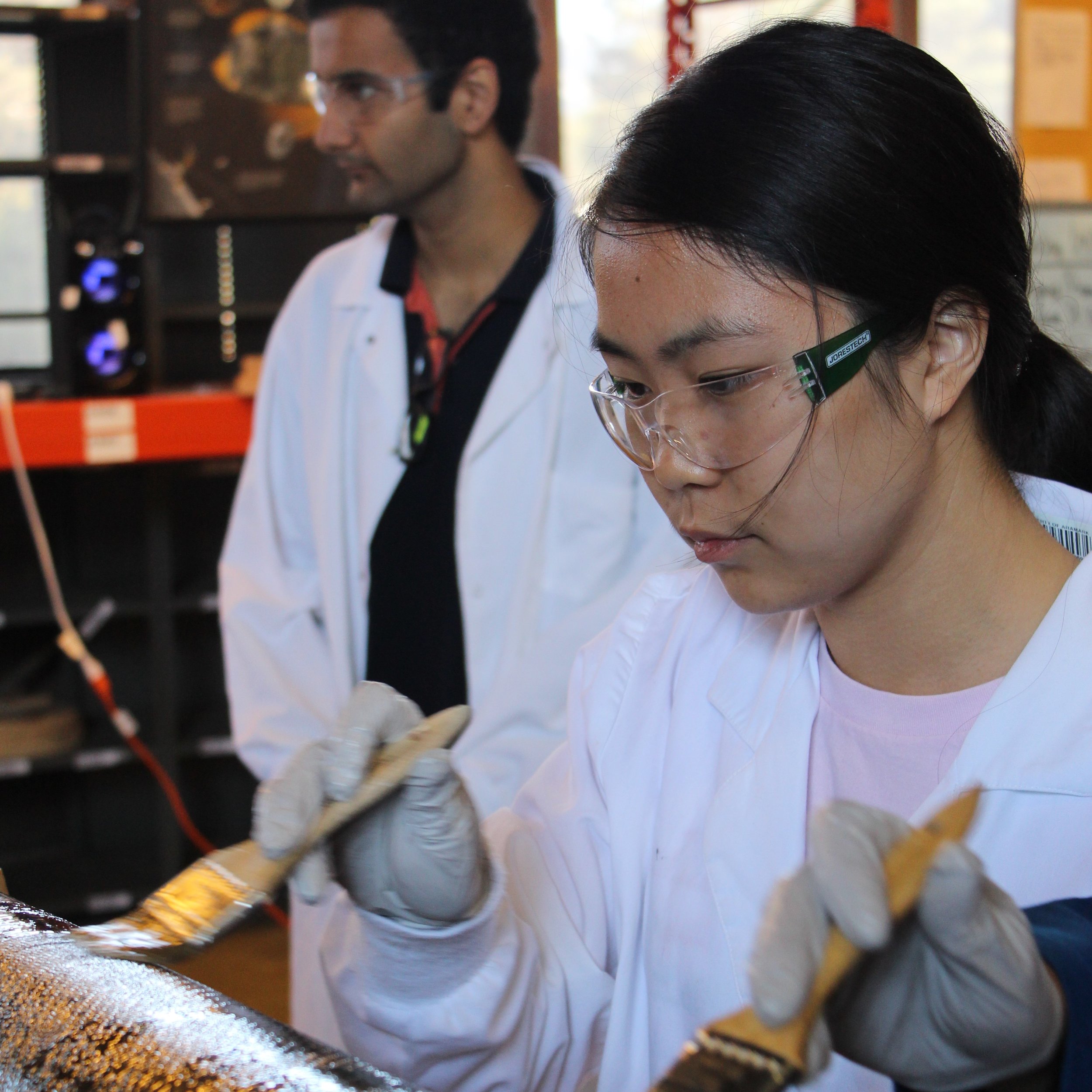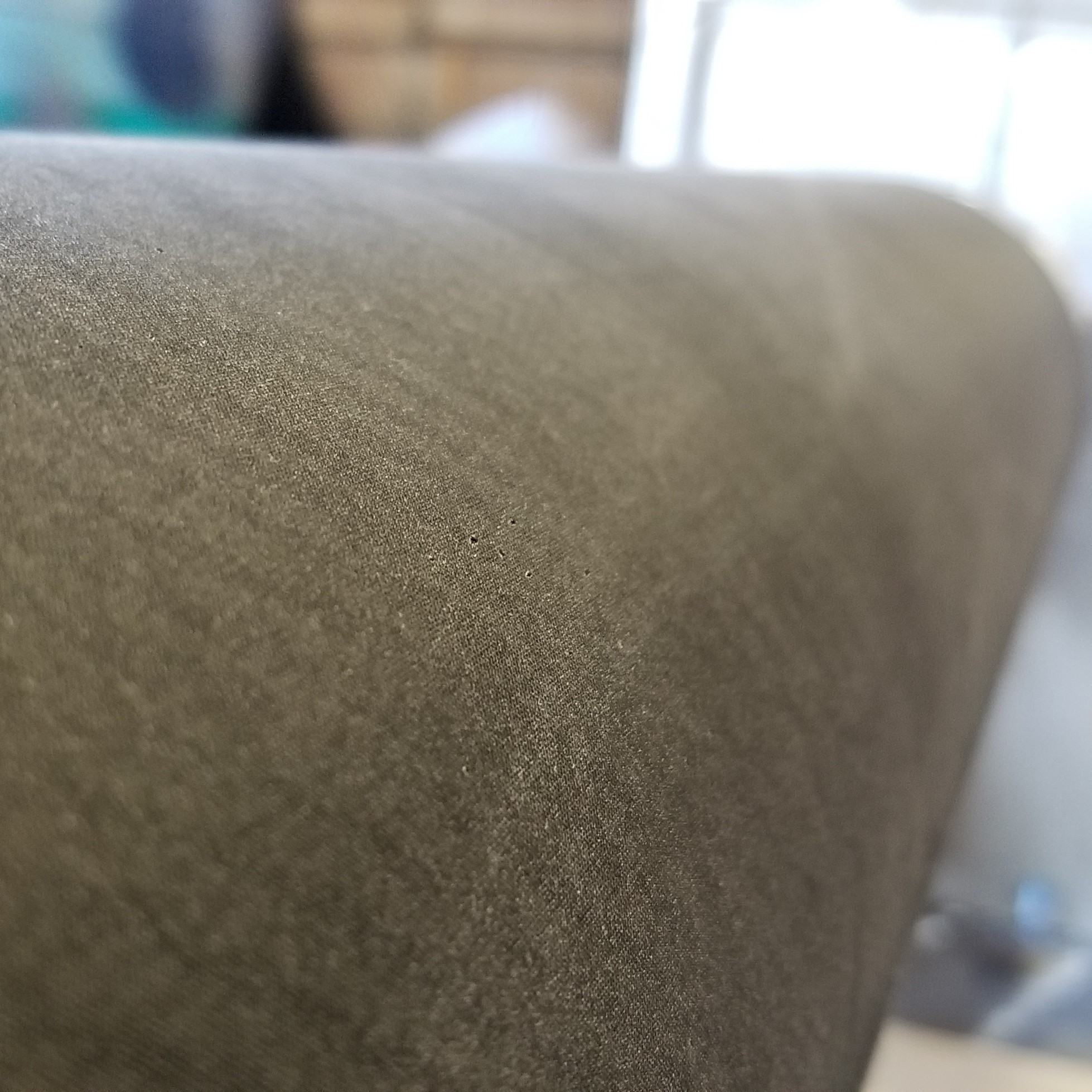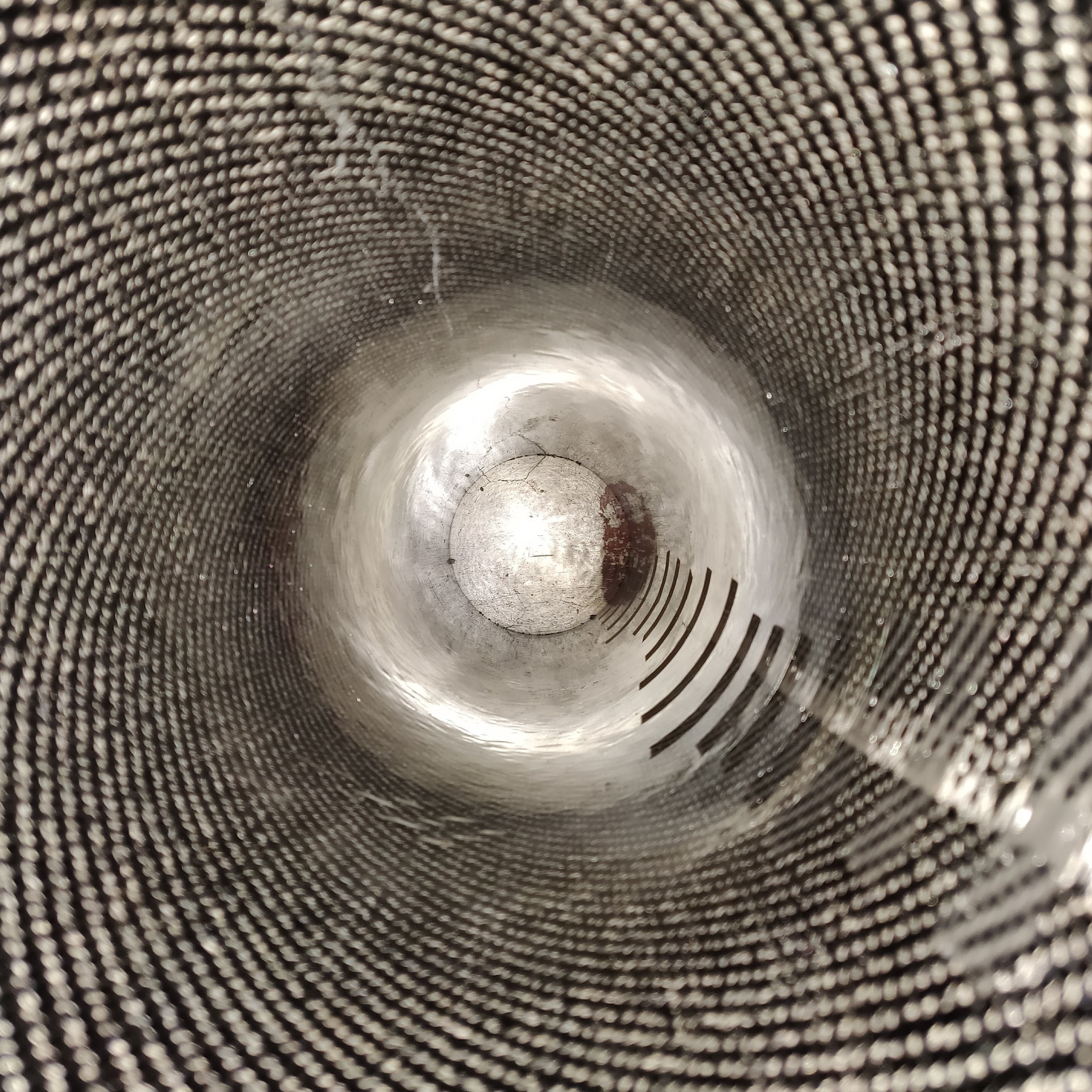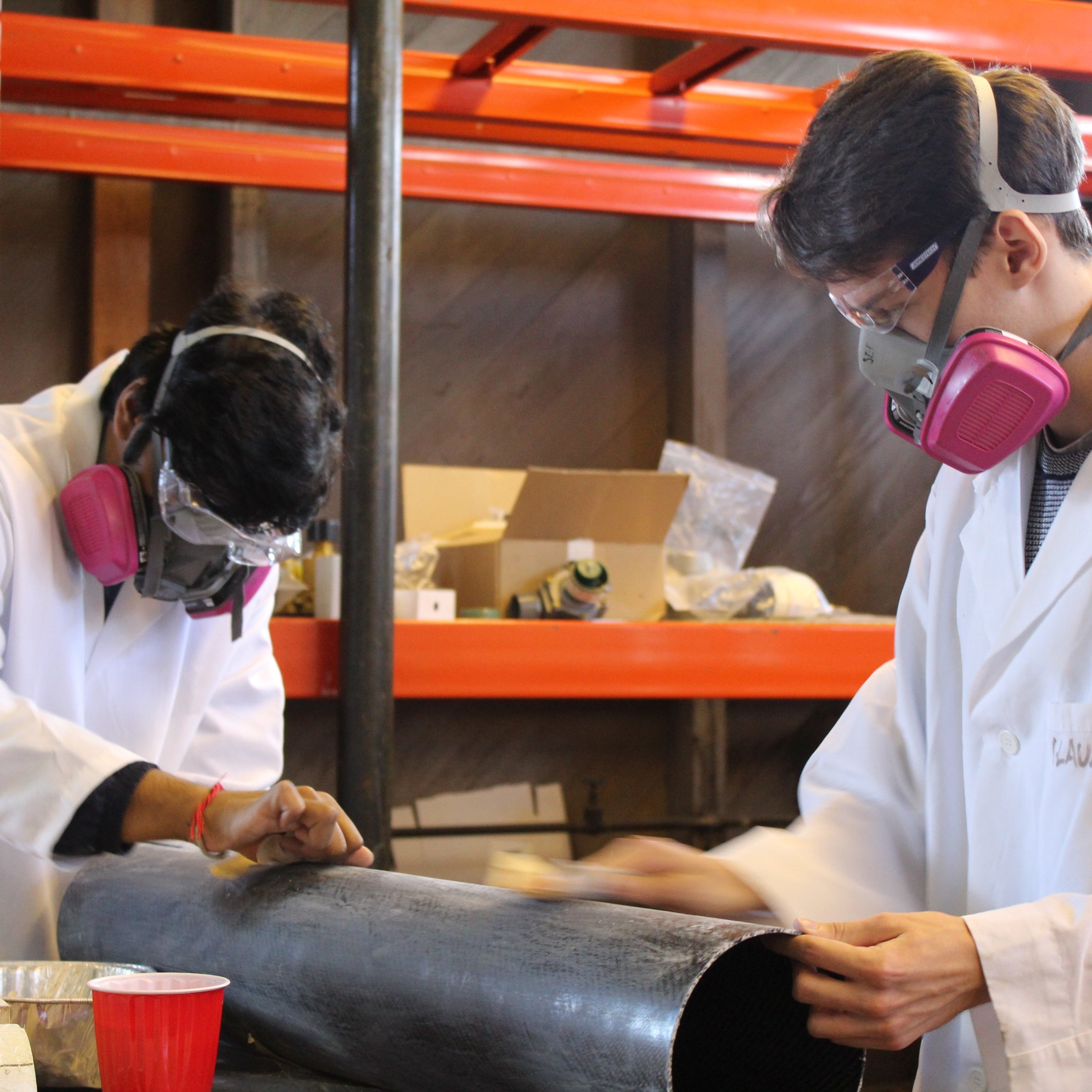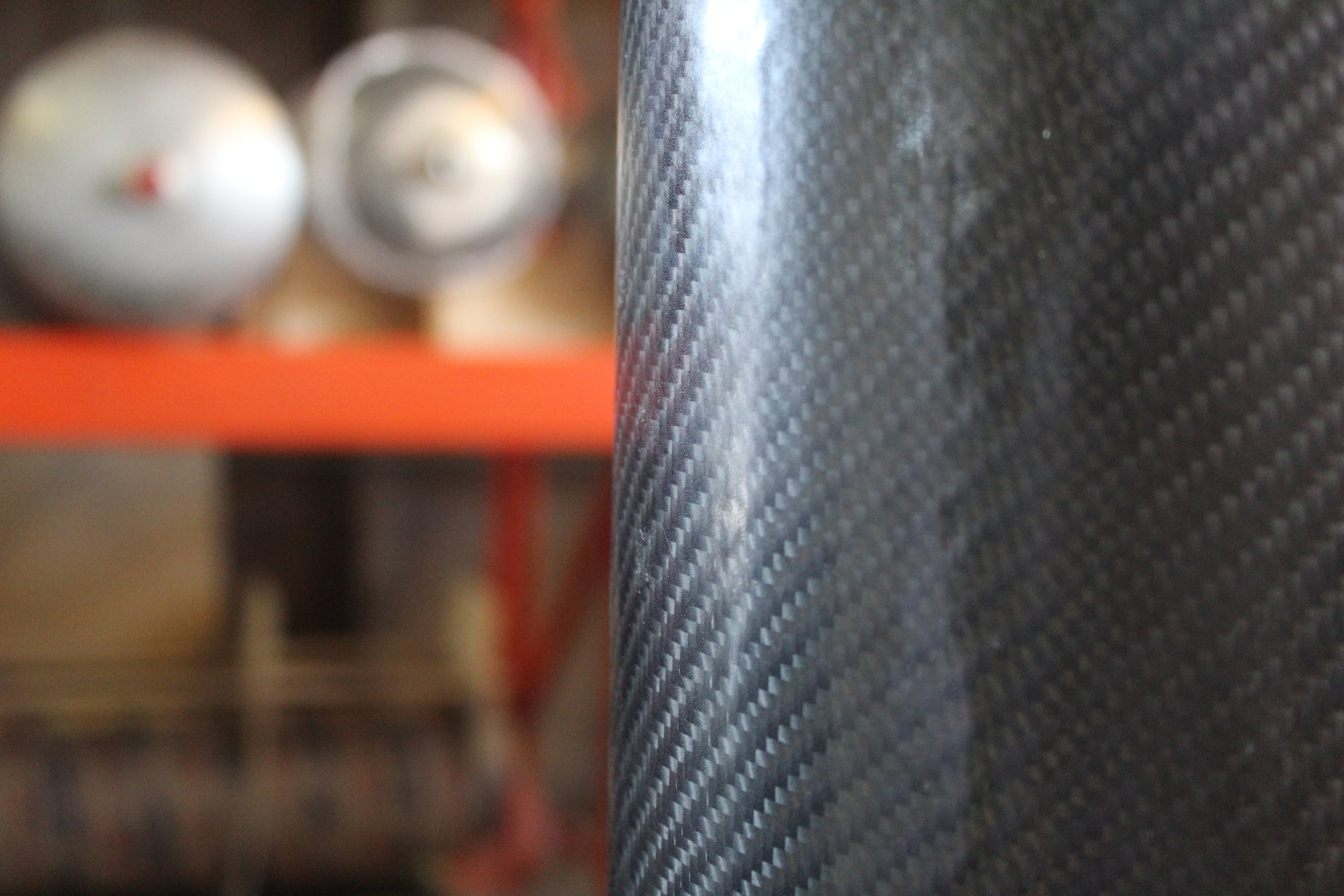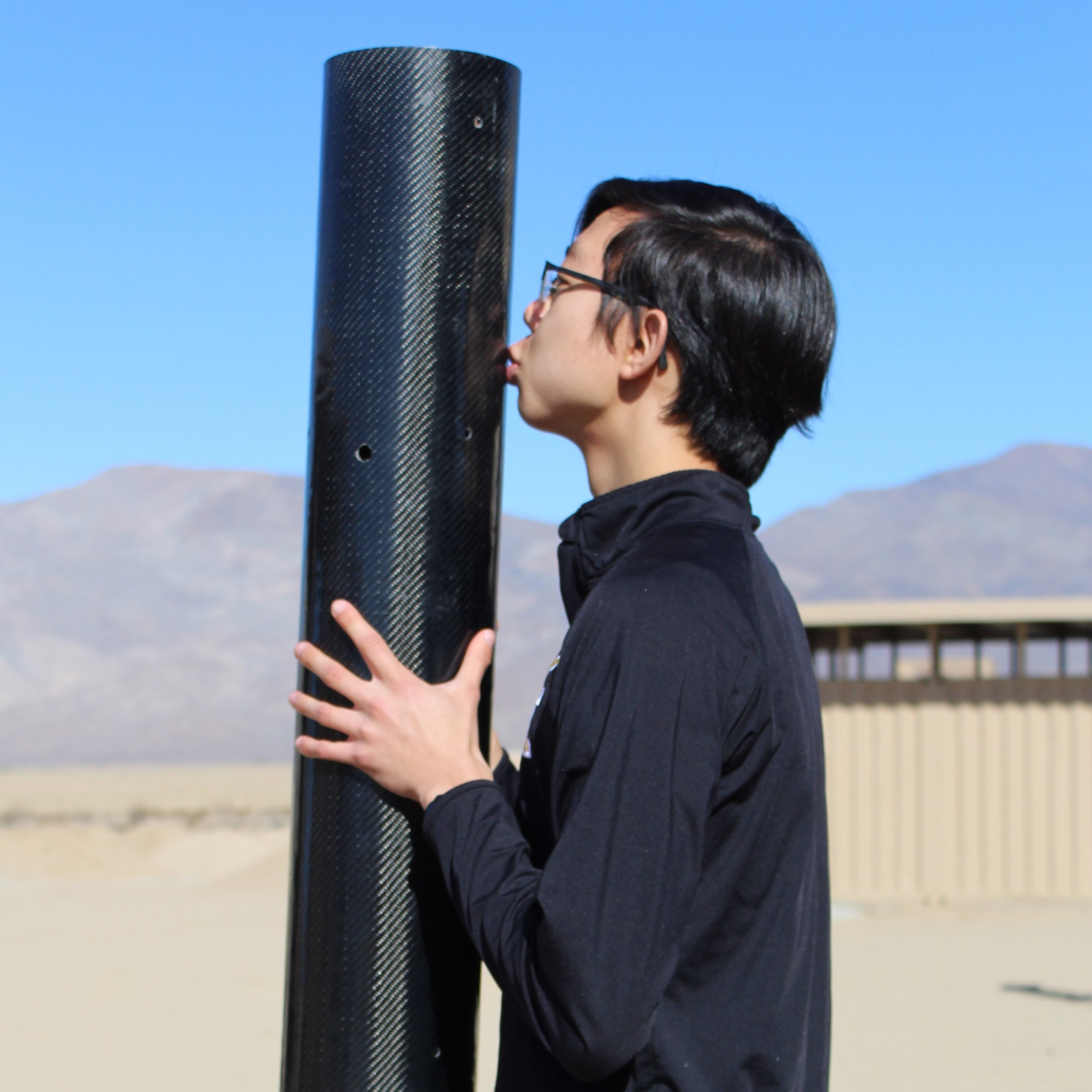LAD-1
LAD-Spark was the first rocket designed, built, and flown by SEB. As a Low Altitude Demonstrator, LAD-Spark was built to demonstrate design and manufacturing techniques that will be used on larger and more ambitious vehicles flown by SEB in the future.
LAD-Spark was a testbed for two key technologies: (1) an all-composite, monocoque airframe built from a combination of carbon fiber and fiberglass, and (2) a custom flight computer and cold-gas recovery system intended for use with future high-altitude liquid rocket flights.
LAD-Spark launched from the Friends of Amateur Rocketry Launch Facility, Mojave Desert, CA in November of 2018. LAD-Spark reached an estimated altitude of 6,000 feet above ground level and a speed of Mach 0.68. Unfortunately, a defect in the shear pins used to ensure proper parachute deployment caused an anomaly in the recovery system, and LAD-Spark returned to Earth at a speed approximately eight times faster than anticipated, resulting in major damage to the airframe and flight computer data logger.
6,000 Feet
ESTIMATED MAX ALTITUDE
96 Inch
Rocket Height
0.68 Mach
ESTIMATED TOP Speed
6.4 Inch
Rocket Diameter
PROJECT HIGHLIGHT
EXPLORING COMPOSITES
LAD-Spark's airframe demonstrated our growing familiarity with the techniques involved with manufacturing composite airframes for high-power rocketry. The entirety of LAD-Spark's airframe was constructed using a composite of carbon fiber and fiberglass, materials chosen due to their favorable strength-to-weight ratios and cost-effectiveness. The layup process, shown in the following photographs, involved covering the mandrel with a sheet of Mylar (to facilitate the eventual removal of each completed tube), carefully measuring and cutting sheets of composites, meticulous layering and saturation of each composite layer with epoxy resin, and a 24-hour room temperature cure. The finishing process that followed a successful cure consisted of careful removal of the composite structure from the mandrel, followed by several iterations of sanding and polishing. To produce the main body tubing of LAD-Spark, we completed layups on two 48-inch-long mandrels six inches in diameter in a 2-2-2 layering scheme: two layers of carbon fiber followed by two layers of fiberglass and a final two layers of carbon fiber. LAD-Spark's fins featured a laser-cut wood core reinforced with an eight-layer composite on each side. For the nosecone, we used a CNC-milled negative mold to achieve our desired shape and performed a multi-layered fiberglass layup in a similar fashion using the machined mold.

